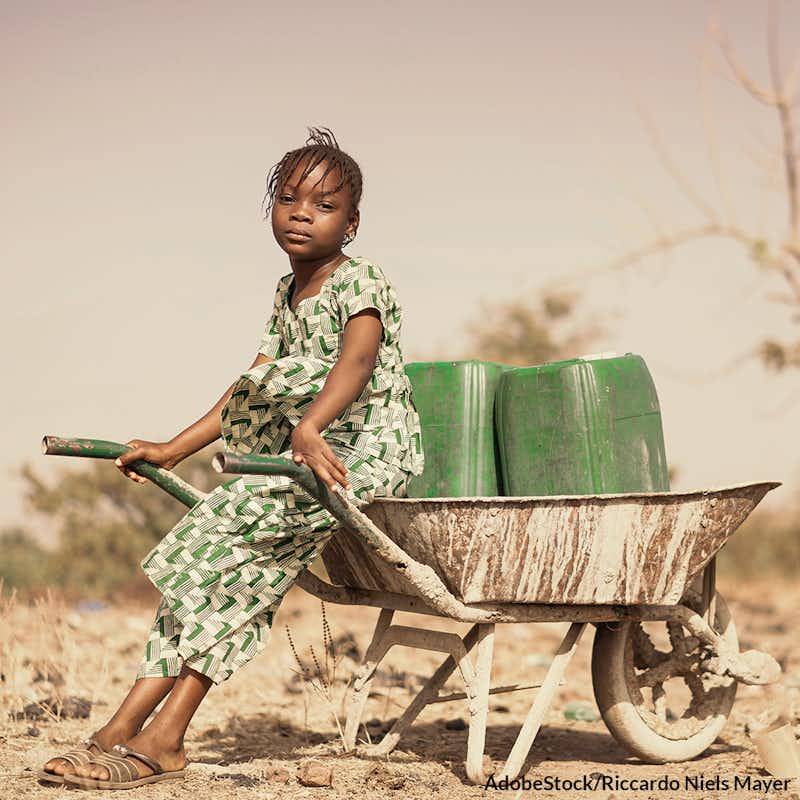End Environmental Racism, Stand Up For Minorities Facing The Brunt Of The Climate Crisis
13,467 signatures toward our 50,000 Goal
Sponsor: The Rainforest Site
Climate crisis is real and people of color are suffering the most.

Centuries of systematic oppression have created an environmental vacuum on earth that blights Black, Brown, Indigenous and lower-wealth communities with pollution and dwindling resources.
From a local point of view, it's called redlining, restrictive covenants and unfair zoning practices. From a global standpoint this is nothing more than economic and environmental apartheid 1.
Approximately 74 million people of color, or 57%, live in counties with at least one failing grade for ozone and/or particle pollution, compared with 38% of whites 2.
Widespread discrimination and government neglect has kept this issue out of the spotlight, but the voices of minority and indigenous continue to scream for climate justice.
"These days we go to the forest with hunger, and return bringing more hunger," a Shawi community member, shared in the Minority Rights Group's Key Trends Report 2019 3.
This indigenous group makes its home in 19 distinct communities in the northern Peruvian Amazon, where climate change is causing unprecedented damage. Deforestation, coupled with rising temperatures and extinction rates among native flora and fauna have made it difficult for the Shawi to survive 3.
The danger to minority communities in the U.S. is already present and getting worse. Minority populations are more likely to live near toxic facilities 4, and breathe in more polluted air than White communities across the US, according to the NAACP's 2012 "Coal-Bloodedd" study 5. U.S. minorities are further 38% more likely to be exposed to the asthma-causing pollutant nitrogen oxide from climate-warming cars, construction equipment, and industrial sources like coal plants, despite the fact that they make up only 13% of the population 4.
This year marked 14 consecutive months of the hottest global temperatures on record, the result of human-generated carbon pollution. And we can see by failing harvests, food insecurity, droughts, floods, and with record-breaking and devastating weather disasters that the human cost will only increase if nothing is changed 6.
The Clean Power Plan, finalized in 2015, could reduce carbon emissions by 32% below 2005 levels by 2030, but it is still held up by lawsuits against an administration that denies science and compassion for profits. The EPA must approve the Clean Power Plan today to protect the lives of millions of Americans 7.
No one should be forced to live in a polluted environment because of the color of their skin. Sign the petition and tell EPA Administrator to enact rules that limit carbon emissions in predominately minority communities.
- Mustafa Santiago Ali, The Guardian (28 July 2020), "Environmental racism is killing Americans of color. Climate change will make it worse."
- American Lung Association (2020), "State of the Air."
- Minority Rights (2019),"Minority and Indigenous Trends 2019."
- NAACP (2012), "Coal Blooded: Putting Profits Before People."
- Eillie Anzilotti, Fast Company, (20 March 2019), "White people cause the most pollution, but people of color suffer the most from it."
- Asad Rehman (9 September 2016), "Yes, Climate Change Does Kill People of Color More."
- Elvina Nawaguna, Governing (21 June 2019), "As EPA Finalizes New Carbon Emissions Rule, Blue States Gear Up for Legal Battle."
The Petition:
Dear Administrator of the Environmental Protection Agency,
If our country's response to the climate crisis does not concentrate on minority communities and people of color, it could end up sacrificing the lives of hundreds of thousands of Americans in the coming years.
People in some of the most fertile regions of the world are now experiencing blighted harvests, unprecedented drought, and early mortality all because of climate change. Their resources and means of survival have been dried up.
In the United States, environmental racism has redlined U.S. minorities into neighborhoods where they are 38% more likely to be exposed to dangerous pollutants from climate-warming cars, construction equipment, and industrial sources like coal plants, despite the fact that they make up only 13% of the population.
Without solid rules to reduce the emissions of pollutants by the biggest emitters in the U.S., this will only get worse.
The Clean Power Plan, finalized in 2015, could reduce carbon emissions by 32% below 2005 levels by 2030, but it is still held up by lawsuits. I demand you implement the 2015 Clean Power Plan today and protect the lives of millions of Americans.
Sincerely,